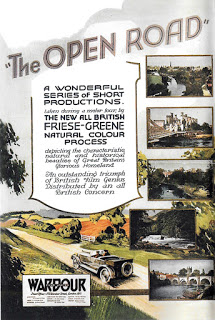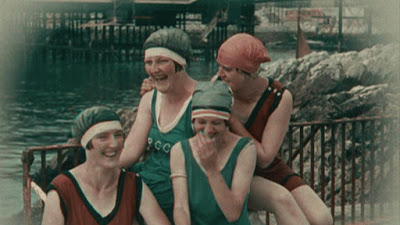Director: George Marshall
Year: 1926
Rating: 7.0
I am not sure why but this sort of filming fascinates me and I could watch
hours of it. It is just shooting ordinary people and scenes from decades
past. Landscapes and cityscapes. How the world looked then, how people dressed,
the technology or lack of it, how people just went about their ordinary days.
Preserved forever. This is what this is as Claude Friese-Greene went about
filming England from 1924 - 1926. Around London to the English Rivera, Torquay
(the home of Fawlty Towers), little villages, Cardiff up to Scotland. People
harvesting the hay, going on rides, the beautiful cars, eating sweets and
so on. Life. What would be wonderful is if this was interactive. That when
he films a small girl on the beach and you could click on it and it would
tell you what happened to this child. Got married, had four children. Went
off to war and was killed in Africa. Worked in the coal mines and became
a union leader. There are so many children filmed that I just had to wonder
how their lives turned out. That would be quite the project.

